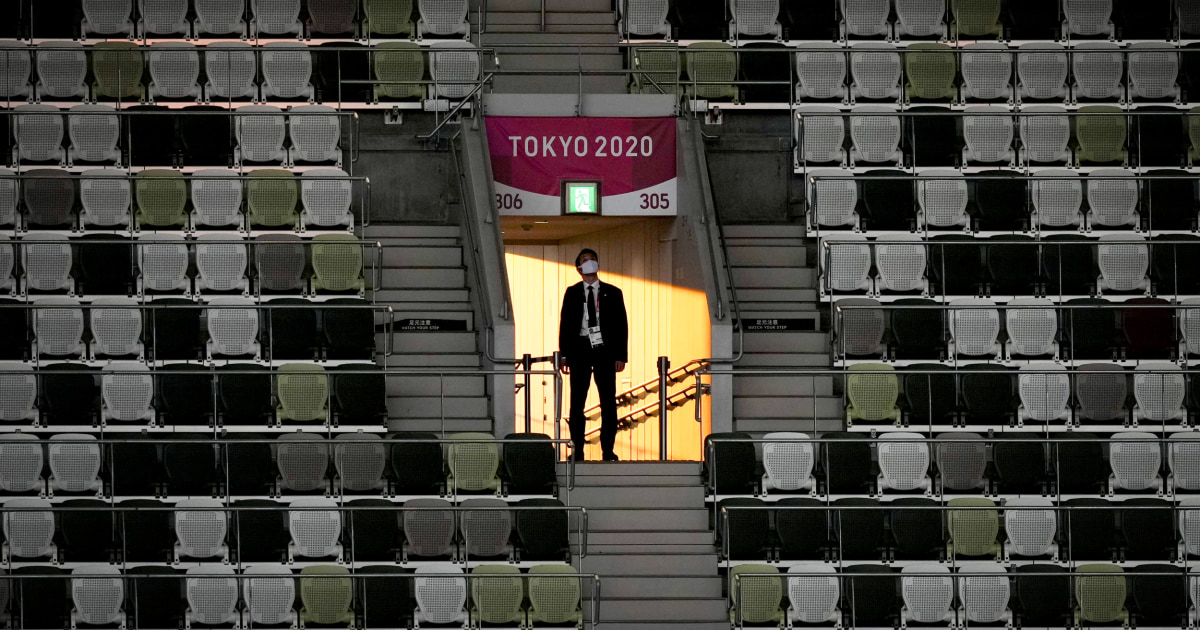
TOKYO — The Tokyo Olympic Stadium on a hot and sticky Monday morning was an edifice in search of an audience.
The people trickling through security and the Covid-19 checks were mostly members of camera crews, various technicians, and the occasional reporter.
“Not busy,” said the Japanese soldier scanning bags for contraband said and shrugged.
The grounds surrounding the 68,000-seat stadium, which was completed in November 2019 and is wedged into a bustling Tokyo neighborhood, would be teeming with tourists if these Olympics weren’t being staged during a pandemic.
Although the track and field events at the stadium don't start until Friday, there is an Olympic museum and the shell of the structure has distinctive Japanese touches like wooden plates and foliage.
But the grounds were spotless — and empty.
The concession stands were shuttered. The turnstiles looked lonely. The handful of ushers on hand did not venture out of the shade.
Inside, the view was breathtaking the way a cathedral can be breathtaking, with the stands creating an enormous bowl and a field of emerald green in the center beneath an open sky. There is also a digital ticker running inspirational messages in English aimed at the athletes.
There are three layers of seats which are dark green, lime green, brown and white and which, on first glance, create the illusion that somebody is sitting in them. But it is just an illusion.
Because Tokyo is under a state of emergency, no fans are allowed in the stands at the Olympic stadium or any of the other venues where the athletes are competing.
But the Olympic stadium is the crown jewel of the Tokyo Olympics and the seats here will remain as they have been since the games official kicked-off last Friday, meaning empty.
Download the NBC News app for breaking news and politics
Fewer than a thousand foreign dignitaries and diplomats, Olympic sponsors and members of the International Olympic Committee were present at the opening ceremony when athletes from more than 200 countries paraded through the stadium.
But that would not have been readily apparent to the estimated 17 million people who tuned in to watch the coverage by NBC News, whose parent company, NBCUniversal, owns the U.S. broadcasting rights to the Games.
So the small army of robots programmed to help spectators find their seats and perform other tasks will sit idle. The ubiquitous signs reminding spectators to social distance, sanitize hands and refrain from blowing on “noisemakers” will go largely unread.
Out of the field Monday morning, nobody was going for the gold just yet.
Instead, workers — all wearing masks against Covid-19 — hosed down the track and took stock of the equipment for the track and field athletes, who start competing this Friday at the stadium.
“The finish line, very nice,” said a security person standing watch over the numbers that will be familiar to anybody who has seen a dramatic Olympic finish and which appeared to be freshly painted.
Other workers were touching up the paint on the flagpoles from which the Japanese and Olympic flags hung limply in the hot and very humid air.
Nearby, a contingent of soldiers dressed in camouflage field uniforms marched smartly up to the flagpoles on which the flags of medal-winning athletes will be raised.
While their commanding officer barked out orders, the soldiers turned towards the poles, grabbed the robes, and pretended to raise and lower the flags, which they then folded up and carried off. But there was nothing in their hands.
"center" - Google News
July 26, 2021 at 04:32PM
https://ift.tt/3BDBP1o
Tokyo Olympic Stadium is the center of the sports universe, but hardly anyone's there - NBC News
"center" - Google News
https://ift.tt/3bUHym8
https://ift.tt/2zR6ugj
Bagikan Berita Ini














0 Response to "Tokyo Olympic Stadium is the center of the sports universe, but hardly anyone's there - NBC News"
Post a Comment